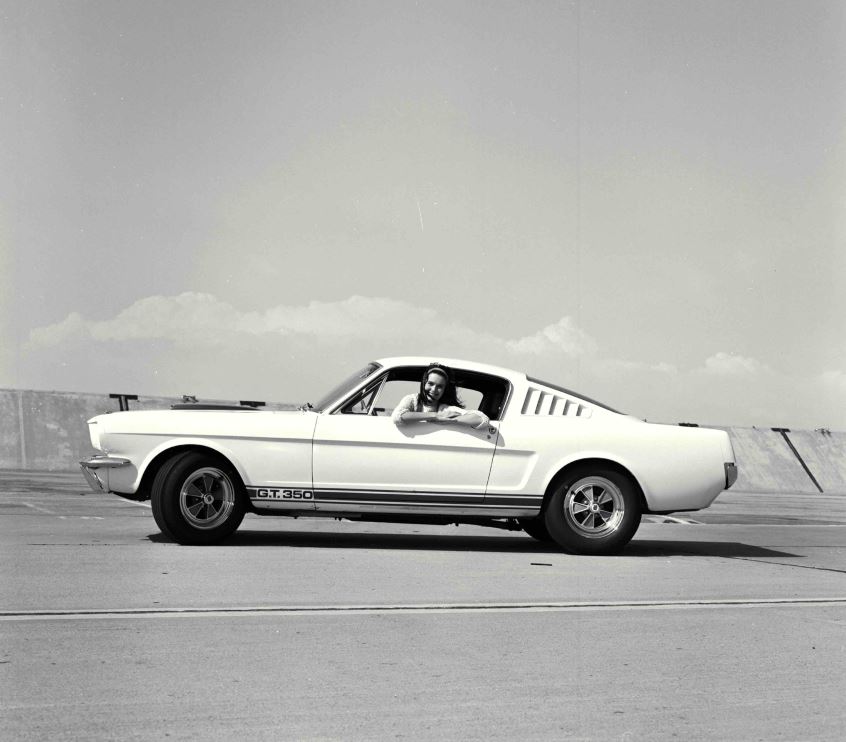
The Ford Mustang was an overwhelming smashing success from its April 17, 1964 debut at the New York auto show, blasting out of showrooms at the rate of 400,000 cars in its first year of production.
But champions don’t rest on their laurels, and Ford wanted to burnish the new compact coupe’s performance credentials, so it turned to Carroll Shelby to produce a souped-up version of the Mustang and to race it on the track.
“They went out and convinced Shelby to ‘Cobra-ize’ a limited run of ultra high-performance racing Mustangs to become ‘Corvette killers’ on the racetrack, in the hopes that Shelby's credibility with the performance crowd would rub off on the entire Mustang lineup,” explained Ford’s enthusiast communications manager, John Clor.
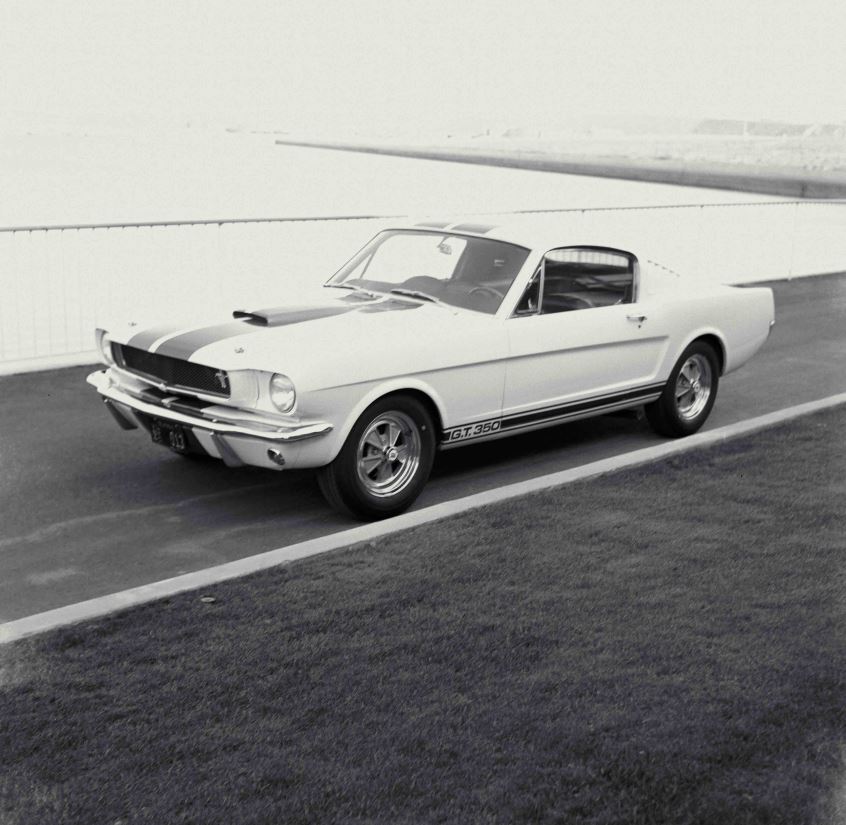
Shelby’s crew produced the GT 350, a car that was still visibly a Mustang, but a much better Mustang. Ford produced the Mustang in three body styles, the familiar hardtop coupe, the sun-loving convertible, and the streamlined fastback. Shelby focused on the fastback.
The original Mustang’s top engine option was a 271-horsepower version of Ford’s 289-cubic-inch small block V8. Shelby’s race team was able to pump that engine up to 306 horsepower, using proven upgrades like a high-rise aluminum intake manifold and free-flowing glass-pack mufflers to boost the flow of air into and out of the engine.
They also dressed the engine up with finned aluminum valve covers and installed an enlarged cast aluminum oil pan with cooling fins to provide additional supply of cool lubricant on the track. The engine sent power to the wheels through a Borg-Warner four-speed transmission, the “four-on-the-floor” that was considered a performance must-have in the day.
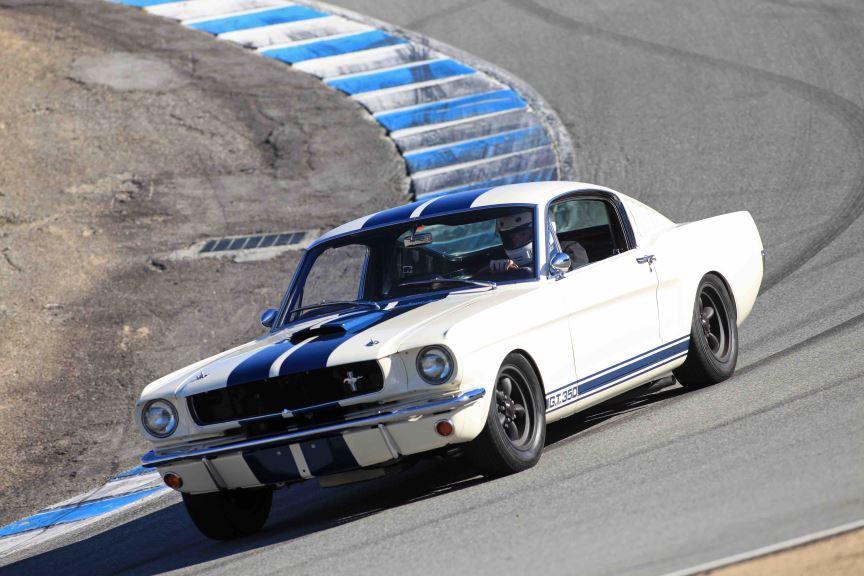
Shelby dumped the Mustang’s standard drum brakes in favor of Kelsey-Hayes disc brakes at the front, with competition pad material for maximum performance. The GT 350 retained drum brakes at the rear, but they were upgraded to wider drums for increases braking surface area and metallic brake shoes replaced the standard organic material.
Of course, there were commensurate improvements to the car’s handling. Shelby American installed a thicker 1-inch front anti-roll bar and Koni adjustable shock absorbers. The GT 350 rolled on larger lightweight Cragar magnesium 15-inch wheels in place of the Mustang’s 14-inchers, and employed Goodyear’s 130-mph-rated Blue Dot tires.
The GT 350 also aimed to improve on the Mustang’s weight distribution, taking some weight off the car’s front end to improve its steering. So Shelby replaced the hood and front valence panel beneath the bumper with lighter fiberglass units. They also relocated the battery from beneath the hood to the trunk, to help shift the weight balance. That proved to be unpopular because of battery fumes getting into the cabin, so for 1966, Shelby left the battery in the stock Mustang location under the hood.
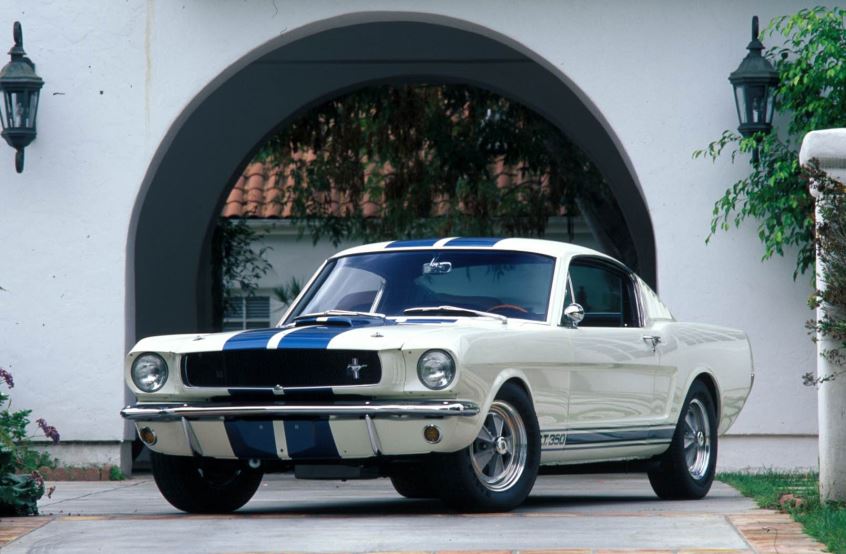
All this work yielded a car that accelerated to 60 mph in 5.7 seconds, cleared the quarter-mile in 14.5 seconds at 98 mph and topped out at 133 mph according to Shelby’s claims at the time.
While the changes may have made the Mustang into a credible racing machine, they did not make it into a time machine. A contemporary drive of one of these legendary rides (Ford president of global markets Jim Farley’s personal vintage racer) at Laguna Seca raceway in California revealed that not only is the GT 350’s steering sluggish and braking barely effective on the track, but the souped-up engine feels weak compared to its modern equivalents. Oh well, the car is still stunningly gorgeous.
Shelby’s sticker price for the ’65 GT 350 was $4,547, compared to a base price of $2,639 for a Mustang fastback. Which would explain why Shelby sold only 513 of the cars that year. That rarity propels their value today, however, with a value of $382,000 for a car in good condition, according to Hagerty.com. A perfect example’s value tops half a million dollars!
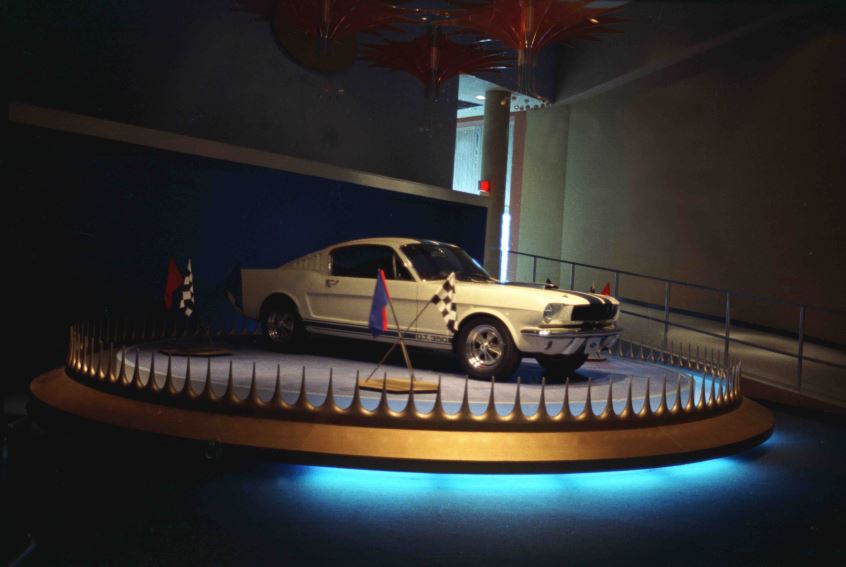
Considering the price of the original and the performance of modern Mustangs, maybe we’ll buy the new car and hang a poster of the classic GT 350 in the garage.
Did Ford’s plan to bolster the Mustang’s performance reputation through association with Shelby work? “Not only did the original 1965-66 Mustang establish the brand in both design language and the fun-to-drive sporting attributes that created such overwhelming customer appeal, but it put Mustang on an irreversible path to becoming an iconic American car,” Clor concludes.
 Dan Carney
Dan Carney